- 37 Posts
- 39 Comments
Med student here. I probably would’ve failed a lot of in house exams/step 1 if I didn’t use anki. IMO it’s best for solidifying knowledge and quick recall of facts, but doing a shitload of practice questions is the best way to apply what you’ve memorized through anki (this last bit is most applicable to med school/mcat prep).
Really the main cost with it is your time. If you miss a day or two it can be daunting to get back in the groove and work on your review backlog. I usually have enough downtime during the day and time on the shitter to get through my reviews + whatever new cards I add. Anki itself is free but they do have a paid iOS app that I got just to use whenever I had a few mins of spare time.
As for the learning curve, this will vary if you’re making your own cards vs using a premade deck for a large standardized exam. Once you know the formatting it isn’t that difficult to make cloze cards for what you’re trying to learn.

 18·8 days ago
18·8 days agoThe starliner astronauts are still up there (and will be until they return on the crew 9 capsule in February). This is the crew that went up before them returning to earth
What did you use to capture/process this?
Love the colors!

 11·20 days ago
11·20 days agoHoly fuck they did it
He’s just a skeegy little guy

 8·29 days ago
8·29 days agoGot the flu and had to cancel my birthday movie party. Most of my friends went to go see the movie anyway. It was the Bee Movie

 3·1 month ago
3·1 month agoThat shot of the forward thrusters is great!

 9·1 month ago
9·1 month agoWhat focal length do you normally shoot at? My rig is at 610mm and I get satellite trails mostly around dusk/dawn, but they all get rejected out during stacking

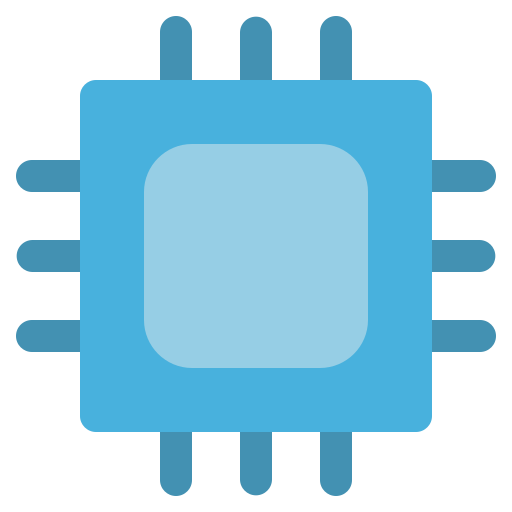 2·1 month ago
2·1 month agoGuess I’ll be sticking with mine for a little bit longer. Was really hoping for pancake lenses in this
Some nice colors in the sky If you’re north enough. Sadly I doubt this will be as strong as the aurora back in May, but maybe one day well get them down in Atlanta again
NGC 4490 is a galaxy colliding with the smaller NGC 4485 galaxy, and both are about 25 million light years away. This image was taken with a monochrome camera through filters for luminance (all visible light), red, green, blue, and Hydrogen-alpha (656nm), which were combined into a color image. The Hydrogen-alpha was combined with red (described below) to make the HaLRGB image. The pink Ha regions are star forming nebulae within the galaxies. This got cropped out of the final pic, but I ended getting some gorgeous diffraction spikes on this star near the edge of the full FOV
Places where I host my other images:
-
TPO 6" F/4 Imaging Newtonian
-
Orion Sirius EQ-G
-
ZWO ASI1600MM-Pro
-
Skywatcher Quattro Coma Corrector
-
ZWO EFW 8x1.25"/31mm
-
Astronomik LRGB+CLS Filters- 31mm
-
Astrodon 31mm Ha 5nm, Oiii 3nm, Sii 5nm
-
Agena 50mm Deluxe Straight-Through Guide Scope
-
ZWO ASI-120MC for guiding
-
Moonlite Autofocuser
Acquisition: 27 hours 37 minutes (Camera at half Unity Gain, -15°C)
-
Ha - 128x360"
-
Lum - 464x60"
-
Red - 152x60"
-
Green - 150x60"
-
Blue - 123x60"
-
Flats- 30 per filter
-
24 JimmyFlats per broadband filter
Capture Software:
- Captured using N.I.N.A.
PixInsight Processing:
-
BatchPreProcessing (with premade JimmyFlats)
-
StarAlignment
-
ImageIntegration
-
DrizzleIntegration (2x, Var β=1.5)
-
DynamicCrop
-
DynamicBackgroundExtraction
duplicated each image and removed stars via StarXterminator. Ran DBE to generate background model. model subtracted from original pic using the following PixelMath (math courtesy of /u/jimmythechicken1)
$T * med(model) / model
Luminance:
-
BlurXTerminator
-
ArcsinhStretch + histogramtransformation to bring nonlinear
RGB:
-
ChannelCombinaiton to combine monochrome R, G, B stacks into color image
-
SpectroPhotometricColorCalibration
-
BlurXTerminator (correct only mode)
-
HSV Repair
making clean Ha
loosely following this guide
This basically subtracts any broadband signal from the Ha pic, leaving only the Ha emission, which is then combined in with the red and a little bit of the blue channels
- PixelMath to isolate just Ha
Ha-Q * (Red-med (Red)), Q=0.75
- PixelMath to add Ha into RGB image
Red = $T+B*(Ha_Clean - med(Ha_Clean))
Green = $T
Blue = $T+B0.2(Ha_Clean - med(Ha_Clean))
B variable = 0.6 (this controls how strongly the Ha is added)
Nonlinear
-
ArcsinhStretch + histogramtransformation to bring HaRGB image nonlinear
-
MLT for large scale chrominance noise reduction
-
shitloads of curve transformations to adjust lightness, contrast, saturation, etc (with various luminance and star masks)
-
slight SCNR to remove some greens
-
LRGBCombination with stretched Luminance
-
DeepSNR
-
more curves
-
ColorSaturation to slightly desaturate the Ha regions (they were very pink compared to the rest of the galaxy
-
slight noisexterminator
-
LocalHistogramEqualization
-
even more curves
-
Resample to 75%
-
DynamicCrop onto just the galaxy
-
annotation
-

 4·2 months ago
4·2 months agoNGC 4490 is a galaxy colliding with the smaller NGC 4485 galaxy, and both are about 25 million light years away. This image was taken with a monochrome camera through filters for luminance (all visible light), red, green, blue, and Hydrogen-alpha (656nm), which were combined into a color image. The Hydrogen-alpha was combined with red (described below) to make the HaLRGB image. The pink Ha regions are star forming nebulae within the galaxies. This got cropped out of the final pic, but I ended getting some gorgeous diffraction spikes on this star near the edge of the full FOV
Places where I host my other images:
-
TPO 6" F/4 Imaging Newtonian
-
Orion Sirius EQ-G
-
ZWO ASI1600MM-Pro
-
Skywatcher Quattro Coma Corrector
-
ZWO EFW 8x1.25"/31mm
-
Astronomik LRGB+CLS Filters- 31mm
-
Astrodon 31mm Ha 5nm, Oiii 3nm, Sii 5nm
-
Agena 50mm Deluxe Straight-Through Guide Scope
-
ZWO ASI-120MC for guiding
-
Moonlite Autofocuser
Acquisition: 27 hours 37 minutes (Camera at half Unity Gain, -15°C)
-
Ha - 128x360"
-
Lum - 464x60"
-
Red - 152x60"
-
Green - 150x60"
-
Blue - 123x60"
-
Flats- 30 per filter
-
24 JimmyFlats per broadband filter
Capture Software:
- Captured using N.I.N.A.
PixInsight Processing:
-
BatchPreProcessing (with premade JimmyFlats)
-
StarAlignment
-
ImageIntegration
-
DrizzleIntegration (2x, Var β=1.5)
-
DynamicCrop
-
DynamicBackgroundExtraction
duplicated each image and removed stars via StarXterminator. Ran DBE to generate background model. model subtracted from original pic using the following PixelMath (math courtesy of /u/jimmythechicken1)
$T * med(model) / model
Luminance:
-
BlurXTerminator
-
ArcsinhStretch + histogramtransformation to bring nonlinear
RGB:
-
ChannelCombinaiton to combine monochrome R, G, B stacks into color image
-
SpectroPhotometricColorCalibration
-
BlurXTerminator (correct only mode)
-
HSV Repair
making clean Ha
loosely following this guide
This basically subtracts any broadband signal from the Ha pic, leaving only the Ha emission, which is then combined in with the red and a little bit of the blue channels
- PixelMath to isolate just Ha
Ha-Q * (Red-med (Red)), Q=0.75
- PixelMath to add Ha into RGB image
Red = $T+B*(Ha_Clean - med(Ha_Clean))
Green = $T
Blue = $T+B0.2(Ha_Clean - med(Ha_Clean))
B variable = 0.6 (this controls how strongly the Ha is added)
Nonlinear
-
ArcsinhStretch + histogramtransformation to bring HaRGB image nonlinear
-
MLT for large scale chrominance noise reduction
-
shitloads of curve transformations to adjust lightness, contrast, saturation, etc (with various luminance and star masks)
-
slight SCNR to remove some greens
-
LRGBCombination with stretched Luminance
-
DeepSNR
-
more curves
-
ColorSaturation to slightly desaturate the Ha regions (they were very pink compared to the rest of the galaxy
-
slight noisexterminator
-
LocalHistogramEqualization
-
even more curves
-
Resample to 75%
-
DynamicCrop onto just the galaxy
-
annotation
-
It’s an artifact from the camera. The ASI1600 has microlenses over each pixel on the sensor, which makes this pattern around bright stars
The Horsehead Nebula is a dark nebula about 1400ly away from us in the constellation Orion. The Bright star near it is Alnitak, and it one of the stars that makes up Orion’s Belt. Because this is one of the brightest stars that people photograph when shooting DSOs, it often can result in unwanted halos, which are present in my RGB filters. I was able to edit the halos out to a level I felt was acceptable (see processing info below), however there still is some color fringing/artifacts on the edge of the halos. Also the bottom left of Alnitak is the Flame Nebula, which is just a nebula that happens to be in the foreground to the horsehead. Captured over 5 nights from February 14-20, 2022 from my Bortle 6 driveway.
Places where I host my other images:
-
TPO 6" F/4 Imaging Newtonian
-
Orion Sirius EQ-G
-
ZWO ASI1600MM-Pro
-
Skywatcher Quattro Coma Corrector
-
ZWO EFW 8x1.25"/31mm
-
Astronomik LRGB+CLS Filters- 31mm
-
Astrodon 31mm Ha 5nm, Oiii 3nm, Sii 5nm
-
Agena 50mm Deluxe Straight-Through Guide Scope
-
ZWO ASI-120mc for guiding
-
Moonlite Autofocuser
Acquisition: 12 hours 6 minutes (Camera at Unity Gain, -20°C)
-
Lum- 251x60"
-
Ha- 67x300"
-
Red- 33x90"
-
Green- 31x60"
-
Blue- 29x60"
-
Darks- 30
-
Flats- 30 per filter
Capture Software:
- Captured using N.I.N.A. and PHD2 for guiding and dithering.
PixInsight Processing:
-
BatchPreProcessing
-
SubframeSelector
-
StarAlignment
-
ImageIntegration
-
DrizzleIntegration (2x, Var β=1.5)
Linear:
-
DynamicCrop
-
Automatic and Dynamic Background extractions
RGB:
-
ChannelCombination to map monochrome R, G, and B images into a color image
-
PhotometricColorCalibration
-
Slight SCNR green
-
HSV repair
-
ArcsinhStretch + HistogramTransformation to bring nonlinear
Luminance:
- PixelMath to combine Ha and luminance stacks to make super-luminance image (to be used as the luminance layer going forward)
0.7*Ha + 0.3*Lum
-
EZ Decon
-
NoiseXTerminator
-
ArcsinhStretch + HistogramTransformation to bring nonlinear
Nonlinear:
-
Created two circle masks per this guide. SCNR + curve tweaks to mitigate the halos from my RGB filters
-
LRGBCombination with SuperLum
-
Ungodly amounts of curve transformations to further mitigate the halos, as well as just general curves for lightness, saturation, contrast, hues, etc.
-
ColorSaturation
-
Extract L > LRGBCombination for chrominance noise reduction
-
LocalHistogramEqualization
-
EZ Star reduction
-
NoiseGenerator to add noise into reduced star areas
-
another round of LHE
-
more curves
-
CloneStamp to remove a couple of weirdly artifacted stars
-
even more curves
-
Resample to 60%
-
Annotation
-
If you’re going into deep sky imaging, getting a solid tracking mount will be more important than a specific camera/lens. I’ll be honest I haven’t really bought new gear or looked at new equipment in the last few years, but this vid from Alaskan Astro is a great overview and recommendations for beginner setup (I see the 135mm f/2 has already been recommended in here lol). It’s also worth checking out used equipment if you’re on a budget. I’ve found some great deals on the cloudynights classifieds, craigslist, and FB marketplace when I was assembling my rig.
Also since you want to use your camera for astro and normal photography, you can still use a H-alpha modded camera, but just use a custom white balance for non-astro shots. Personally I wouldn’t worry too much about getting a modded cam if you’re just starting out in the hobby, but it’s something you may want to consider if you want to shoot a lot of emission nebulae

 7·2 months ago
7·2 months agoIirc the original goal was ‘at least 10’ but maybe up to 100 flights for a booster. No way to really know without flying them a lot
It’s definitely real, at least for the amateur astronomy subs I (used to) mod. I suspect a lot of the traffic to askastrophotography or telescopes is from people googling stuff and browsing though mobile web, but since /r/astrophotography is just photos, most are just on the app
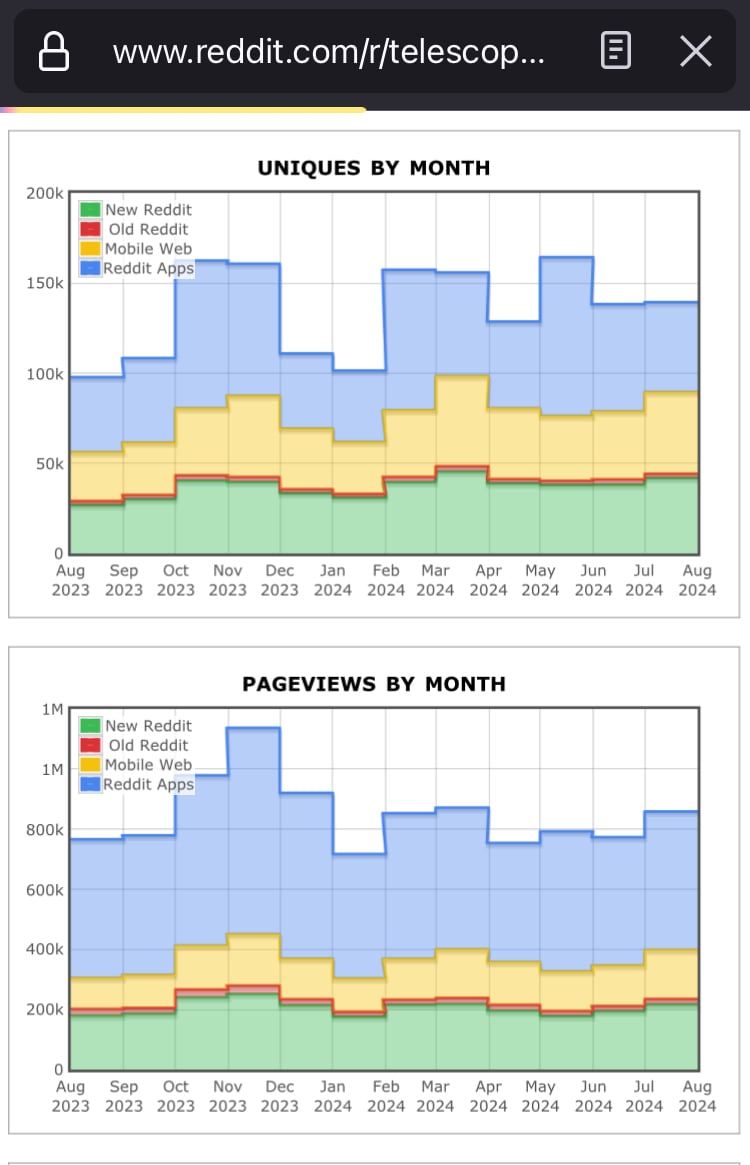
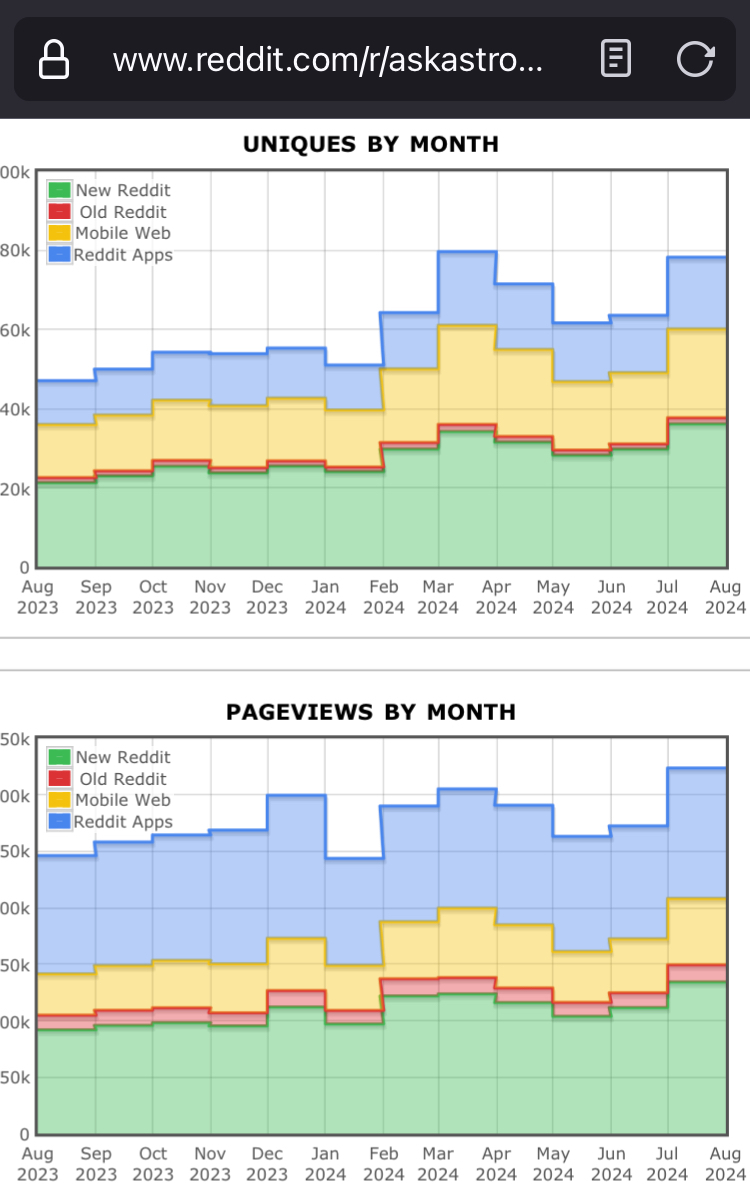
Probably varies a bit from sub to sub, but old reddit users are a clear minority. The vast majority use the app
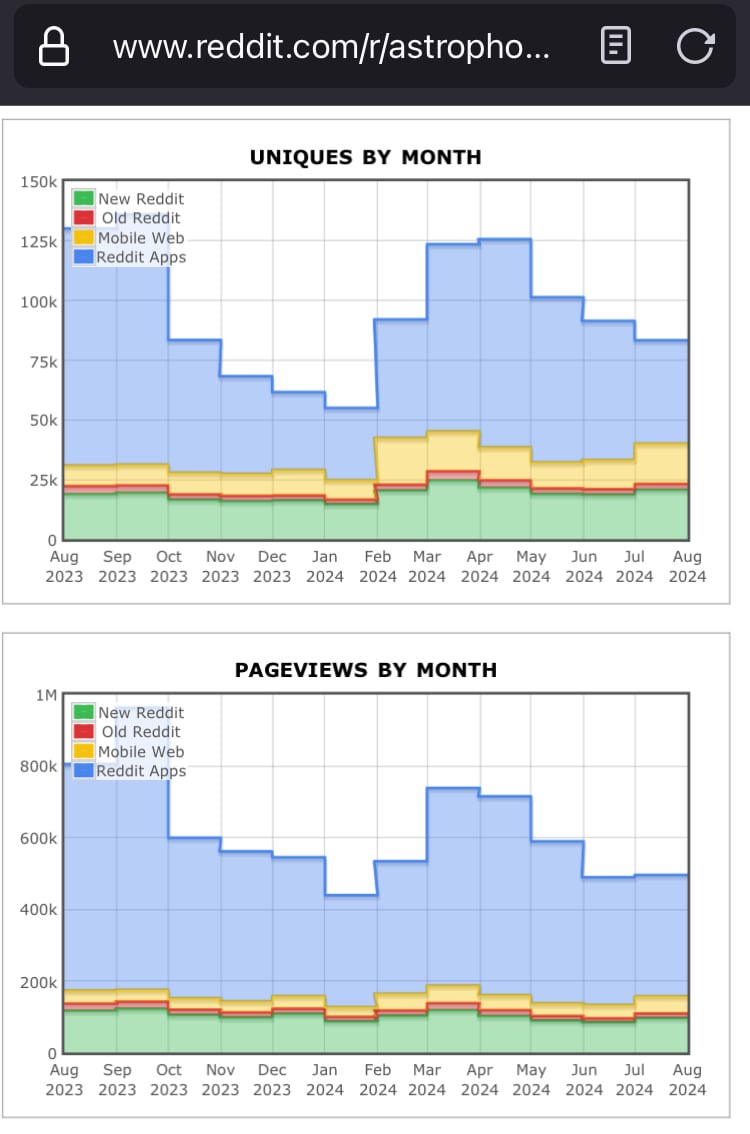
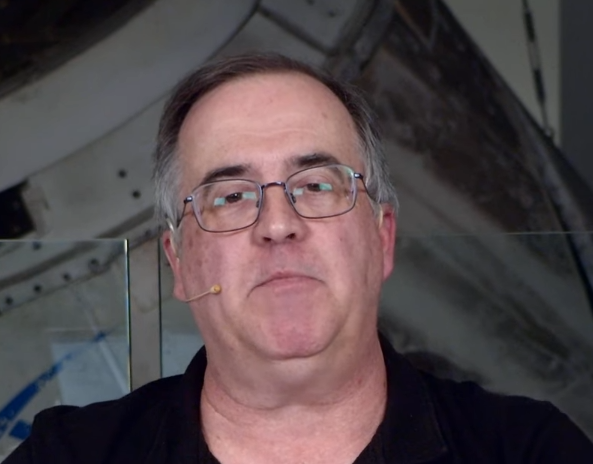


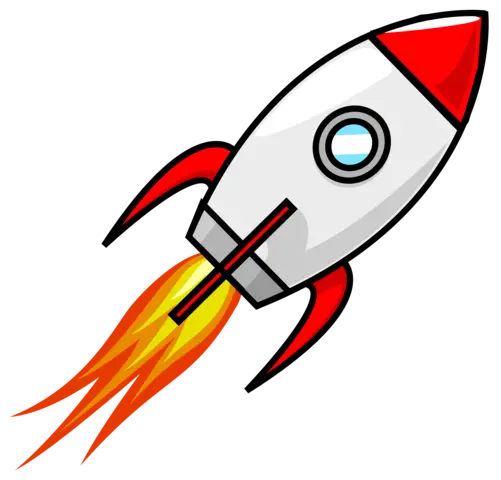




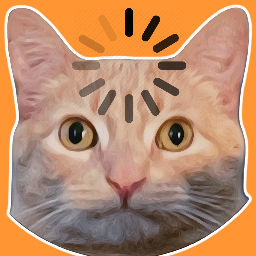
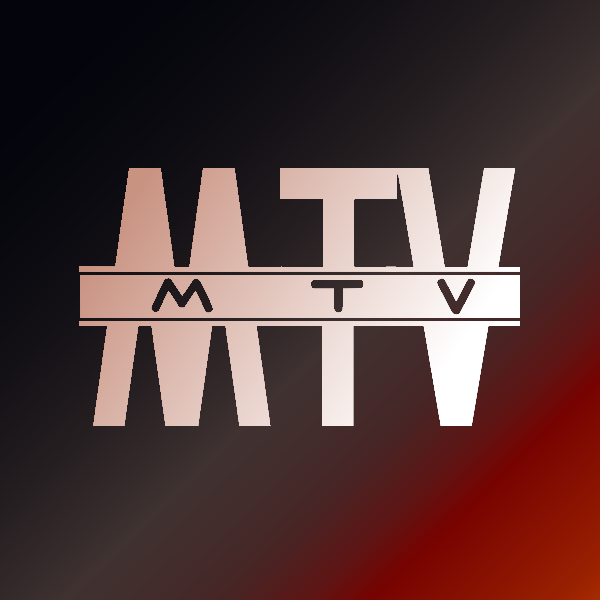
0, I’m just raw dogging /all (minus whomever .world is defederated from)